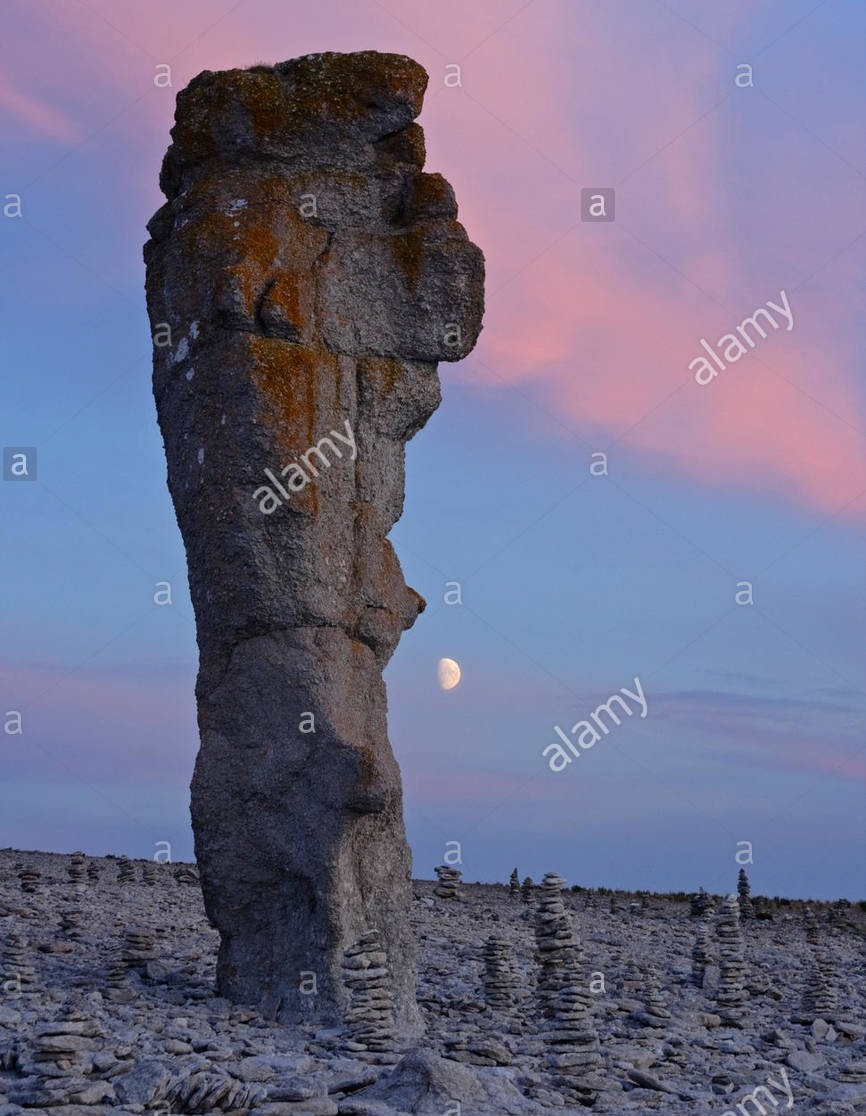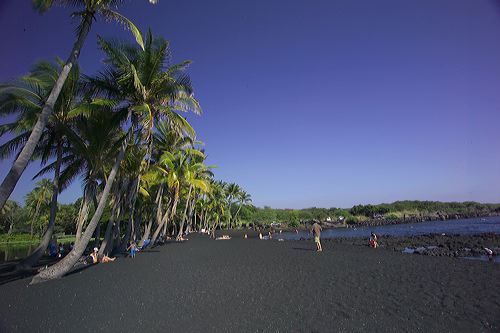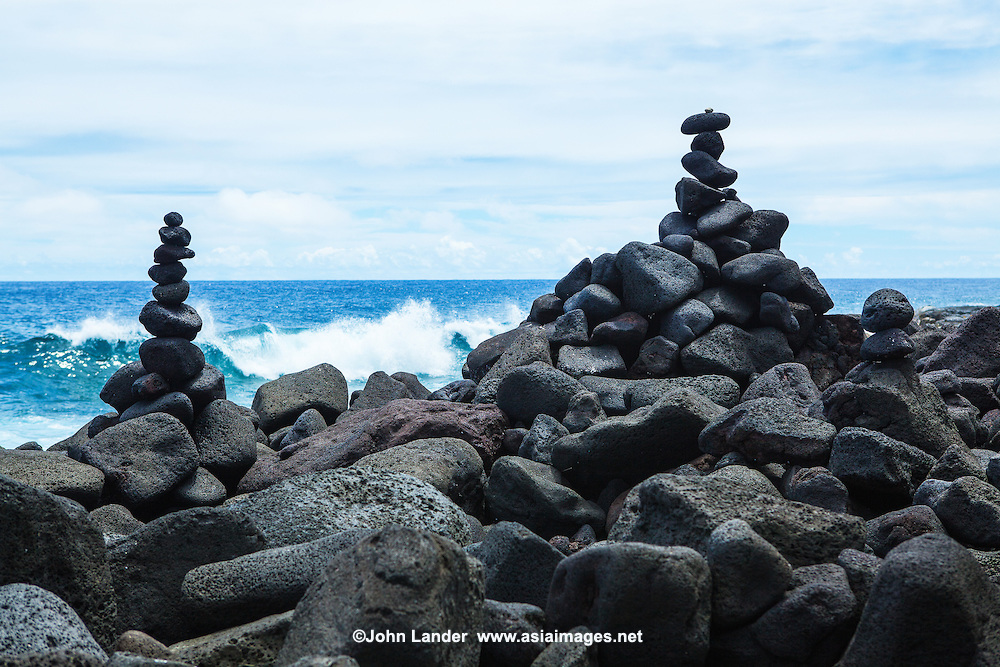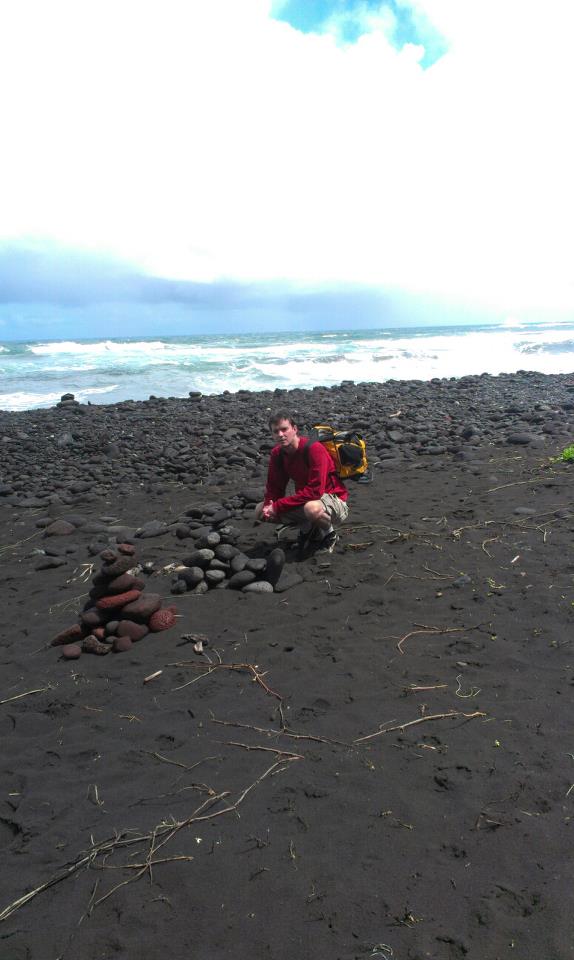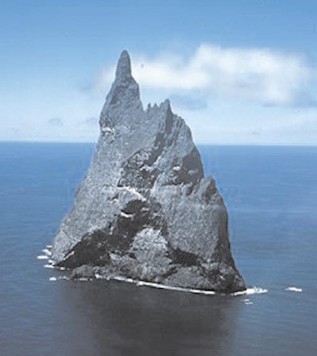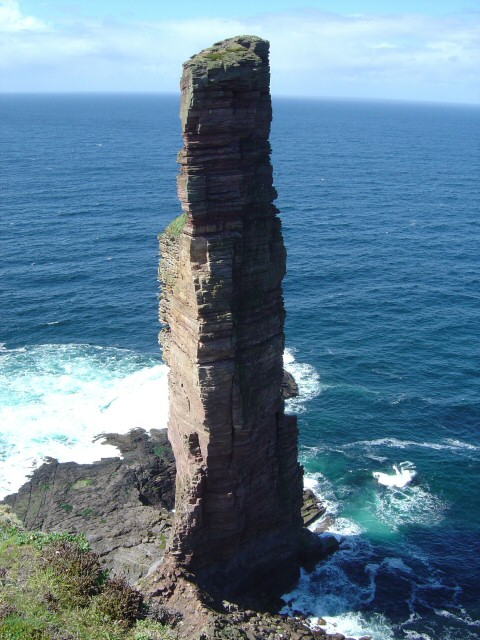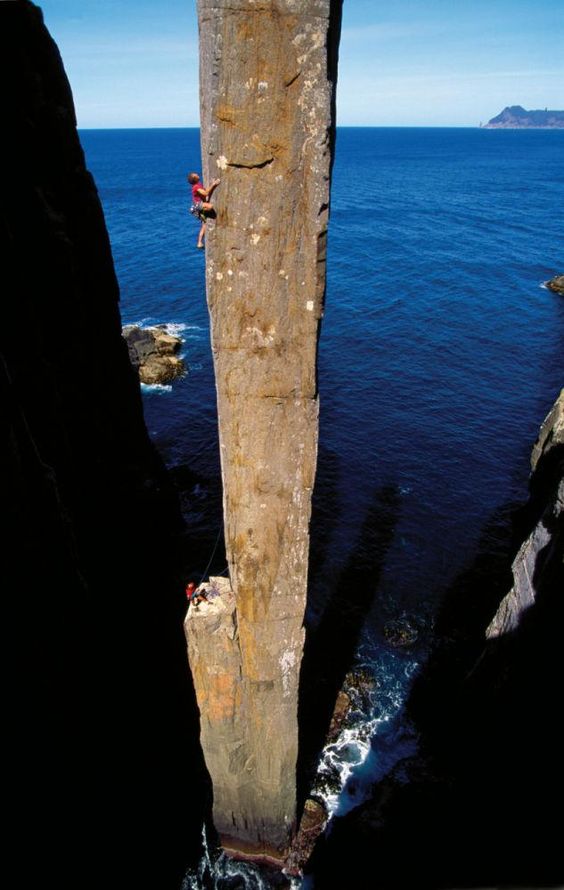Immersion into foreign totems
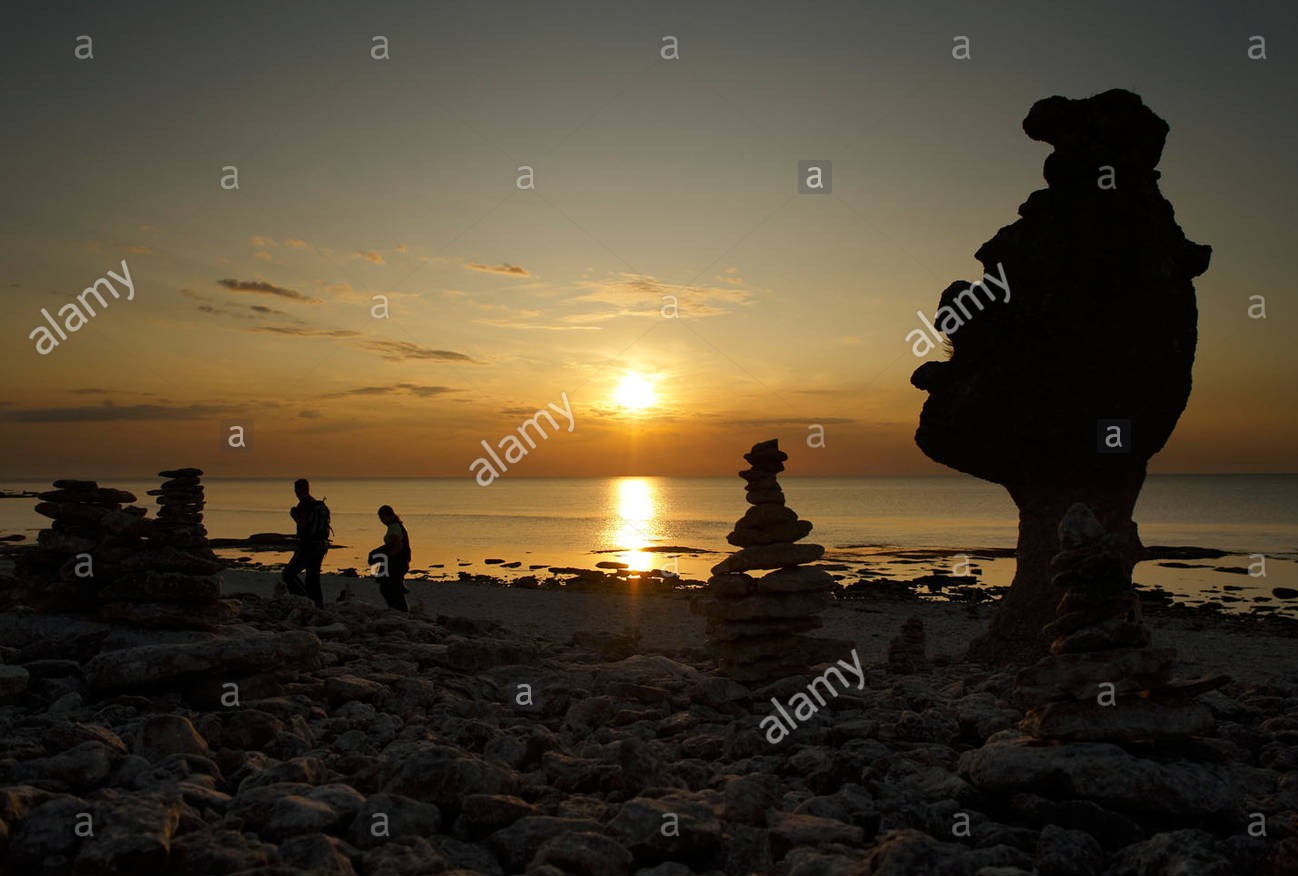 A circle of grey 'little totems', around a Rauk in Fårö, Sweden, in two photographs respectively by Johnny Madsen and Thomas Knauer, on sale on Alamy website.[1][2] |
Mere chances
In already mentioned shores with sea stacks
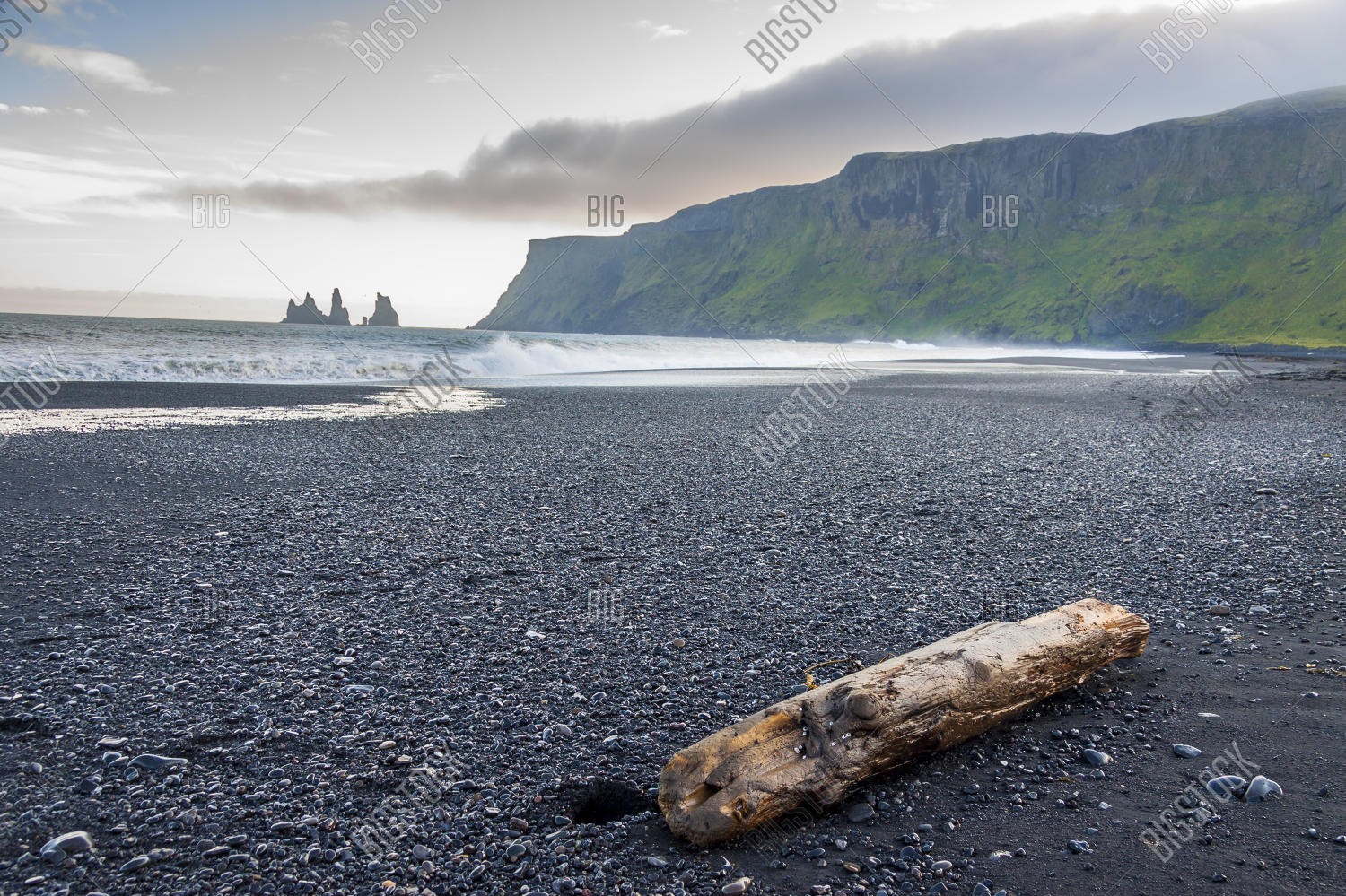
A driftwood in Vik Beach, Iceland, although not half buried, in this modern photograph by Tomasz Parys on sale on Bigstock website.[3]
In not mentioned shipwrecks
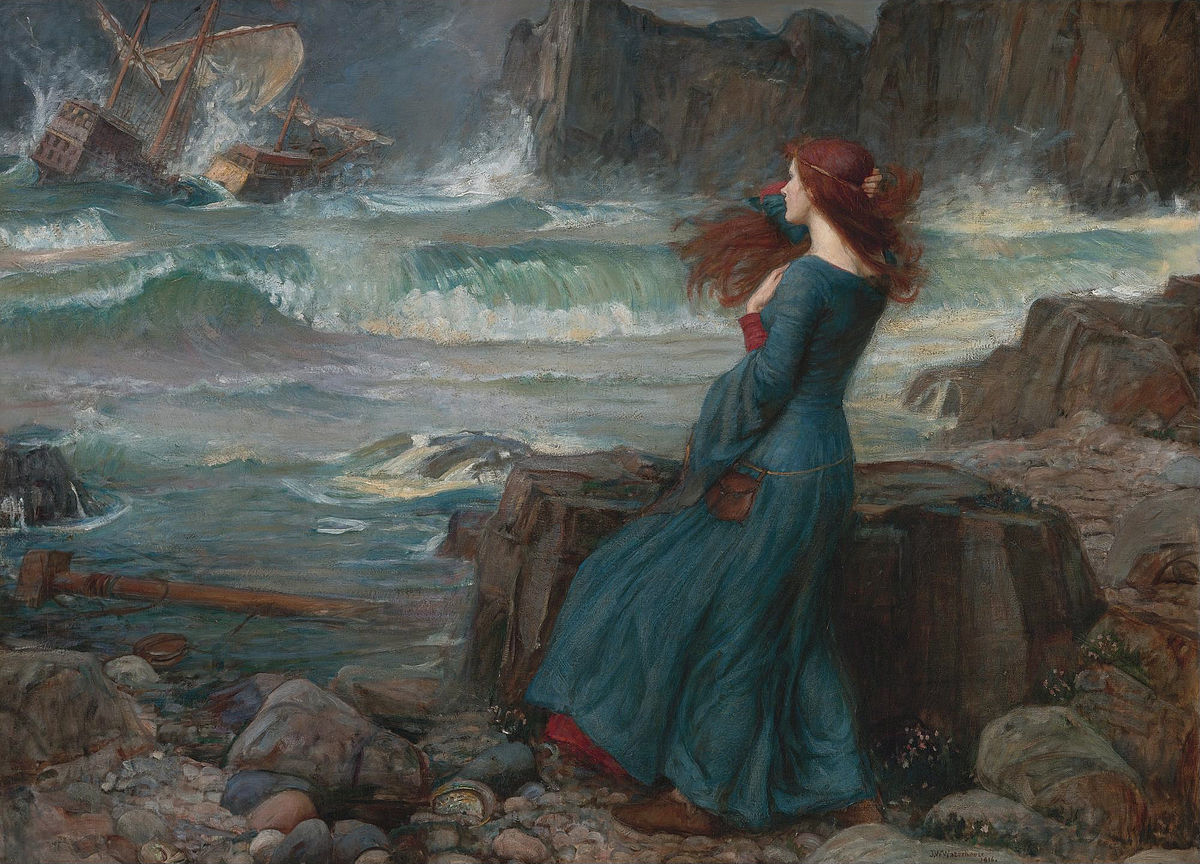
J.W. Waterhouse's 1916 painting of Miranda from Shakespeare's The Tempest, with sea shells and a driftwood, half-buried and in shallow waters.[4]
With a bit of imagination you might see "crisp flax" around the rock in front of her, or perhaps the tore reefs that Bernard White imagined transcribing the lyrics.
Pre-raphaelite paintings, as like as Shakespeare's plays, were loved by the young Barrett, who would write See Emily Play thinking of Millais' Ophelia
and Astronomy Domine thinking of Shakespeare's characters, like Miranda. This fictional remote island is meant to be located in the Mediterranean Sea.
In poetry
Last, oppressing as oppressed,
I was loosed to go my ways
With a Totem on my breast
Governing my nights and days
- — Rudyard Kipling, "The Totem", 1932 [5]
- — Rudyard Kipling, "The Totem", 1932 [5]
"On the grave-posts of our fathers
Are no signs, no figures painted;
Who are in those graves we know not,
Only know they are our fathers.
Of what kith they are and kindred,
From what old, ancestral Totem,
Be it Eagle, Bear, or Beaver,
They descended, this we know not,
Only know they are our fathers.
…
All these things did Hiawatha
Show unto his wondering people,
And interpreted their meaning,
And he said: "Behold, your grave-posts
Have no mark, no sign, nor symbol,
Go and paint them all with figures;
Each one with its household symbol,
With its own ancestral Totem;
So that those who follow after
May distinguish them and know them."
- — Henry Wadsworth Longfellow, The Song of Hiawatha, 1855 [6]
...and in today's speeches
Your starting totems are Falcon, Eagle, Hawk, Dandelion, Opel [Indian spelling], and Crow. By studding these you may have a better understanding of your self.[7]
More famous shores with black sand (as ebony??)
Hawaii
|
|
In Hawaii, cairns are called by the Hawaiian word ahu.[9]
|
|
More titanic sea stacks (as a totem??)
Ball's Pyramid
Ball's Pyramid is 20 km (12 mi) southeast of Lord Howe Island in the Pacific Ocean. |
Old Man of Hoy
The Old Man of Hoy is a 137 m red sandstone sea stack on the island of Hoy. It is a distinctive landmark from the Thurso to Stromness ferry and was first climbed in 1966.[13] But the real breakthrough came in 1967. In July of that year, 15 million people watched one of the most audacious BBC outside broadcasts ever undertaken - the climbing of the ‘Old Man of Hoy’. A team of six climbers was filmed ascending a spectacular 450-foot sea stack off the Orcadian island of Hoy in a live broadcast that has been likened to an early example of what we now know as 'reality television'. As academic Paul Gilchrist has described the groundbreaking event: “It connected an armchair audience with the elite of a sport subculture intent on conquering one of Britain's most spectacular geological treasures”.
|
Totem Pole (Tasmania)
The Totem Pole is a 65 metres (213 ft) sea stack on the island of Tasmania, Australia. It is one of the most distinctive rock climbing routes in the world, with hundreds of climbers attempting to climb it every year.[14] Location: Cape Hauy, Tasman National Park, Tasmania, Australia. The Totem Pole is hands-down the world's most spectacular sea-stack, and probably the most spectacular natural stone tower of any kind on Earth. Bound to inspire awe in the hardiest of hard-men, this thing just begs to be climbed.  Paul Pritchard's book [16] First climbed on aid in 1968 by Australian golden-age hard-man John Ewbank, this tower has a colorful history. The technical difficulty of the climb aside, the approach and execution of the route earn it the reputation of one of the proudest ascents in Australia, referred to by one ascensionist as “the Antipodes’ greatest rock climbing challenge.” [17] The pristine white sandy beach at Fortescue Bay recent quote by John Ewbank, the first ascensionist back in 1968, expressing the sheer fragility of the thing, rang in my ears: |

References
- ↑ http://www.alamy.com/stock-photo-limestone-stacks-called-rauks-at-langhammershammer-faroe-gotland-sweden-73866504.html
- ↑ http://www.alamy.com/stock-photo-rauks-in-the-sunset-limestone-columns-on-gotland-island-sweden-scandinavia-60249602.html
- ↑ http://www.bigstockphoto.com/it/image-41979502/stock-photo-vik%2C-islanda-sandy-beach
- ↑ http://www.sothebys.com/en/auctions/ecatalogue/2009/19th-century-european-art-including-orientalist-paintings-drawings-sculpture-n08542/lot.56.html
- ↑ http://www.poemhunter.com/best-poems/rudyard-kipling/the-totem/
- ↑ http://www.online-literature.com/henry_longfellow/song-of-hiawatha/15/
- ↑ http://forums.psychcentral.com/showthread.php?t=125369
- ↑ http://www.toptenz.net/top-10-black-sand-beaches.php
- ↑ http://en.wikipedia.org/wiki/Cairn#Asia_and_the_Pacific
- ↑ http://asian-images.photoshelter.com/image/I0000Pa_sEgBhMhc
- ↑ https://en.wikipedia.org/w/index.php?title=Ball%27s_Pyramid&oldid=534732106
- ↑ http://talisman-activities.blogspot.it/2007_05_01_archive.html
- ↑ http://en.wikipedia.org/wiki/Old_Man_of_Hoy
- ↑ 14.0 14.1 https://it.pinterest.com/pin/122371314850205600
- ↑ http://wiki.answers.com/Q/What_is_the_totem_pole_in_Tasmania
- ↑ https://www.amazon.co.uk/Totem-Pole-Surviving-Ultimate-Adventure/dp/1841192430
- ↑ http://www.rockandice.com/news/353-Australias-Totem-Pole-Ewbank-Route-goes-free
- ↑ http://www.planetfear.com/articles/The_Totem_Pole_1032.html
